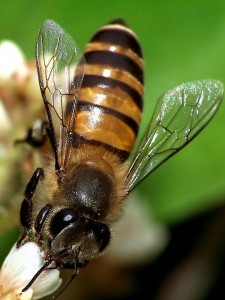Wings of honey bees are an exposure site to pesticides
The toxicity of pesticides to honey bees is determined by the harm they cause to bees when they come in contact with the thorax (the segment of the body where the legs and wings are connected). However, no study has investigated bee wings as a pesticide exposure route. Now, a study published in Environmental Toxicology and Chemistry has found that pesticide contact with wings can also lead to honey bee death. Six different pesticides, including three neonicotinoid pesticides and three pyrethroid pesticides, were applied to bee wings at different dosages to determine the effects. The results showed that when each of the pesticides was only applied to the wings honey bee, mortality was similar to the mortality levels observed when the pesticides were applied to the thorax. The authors suspect that this is because the pesticides were transported through the body rapidly by the numerous blood vessels found in the wings. This study is one of the first to suggest that honey bee wings may represent an important site for pesticide exposure, and should be taken in account in future pesticide risk assessments.


